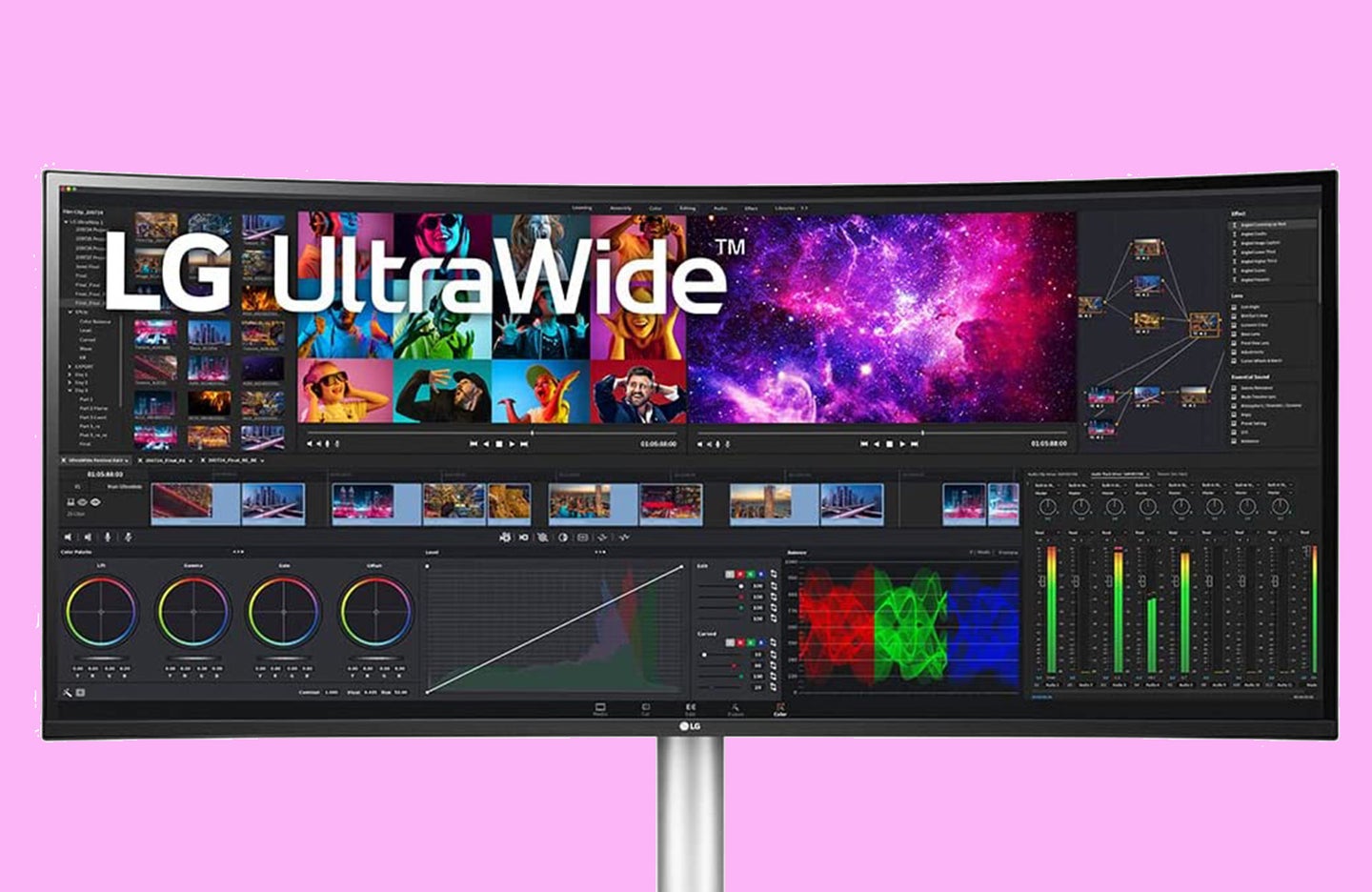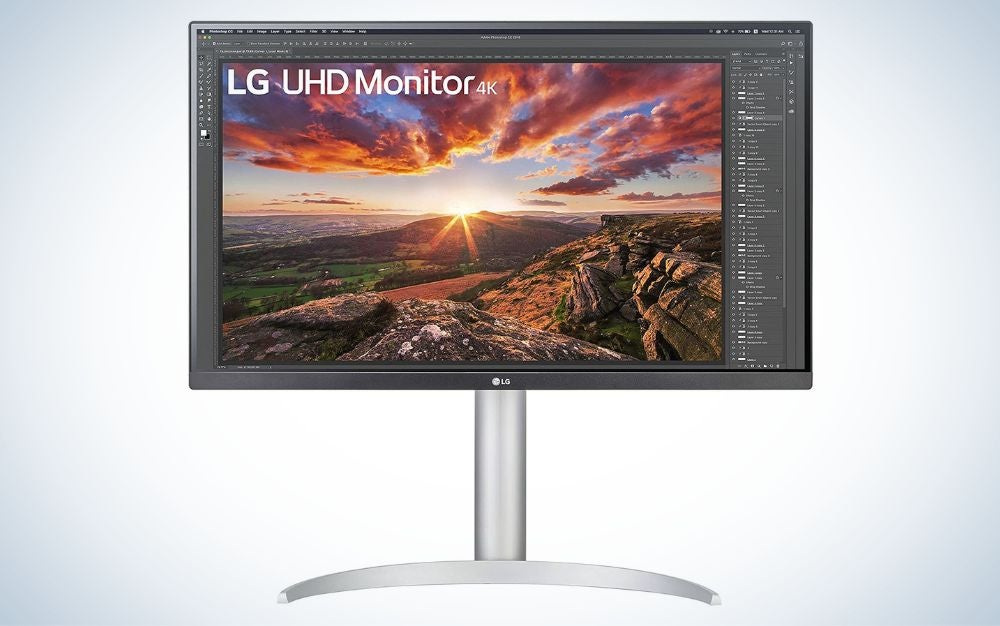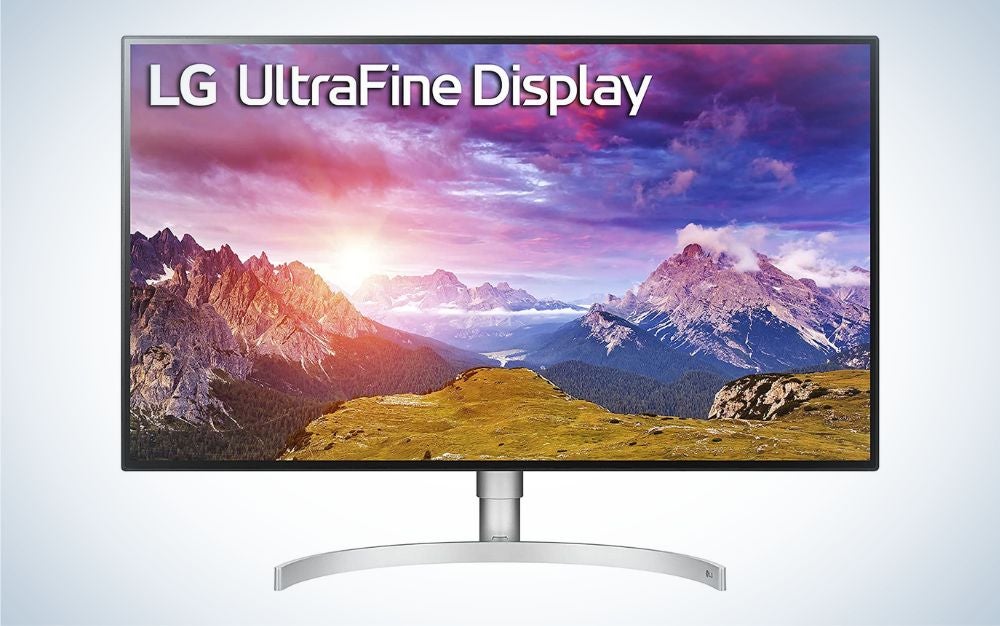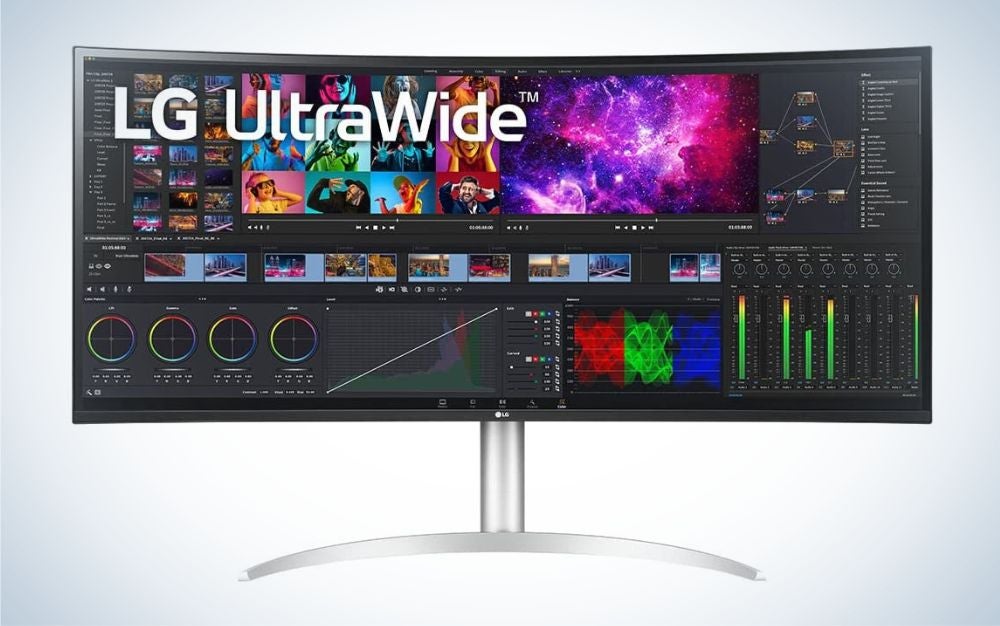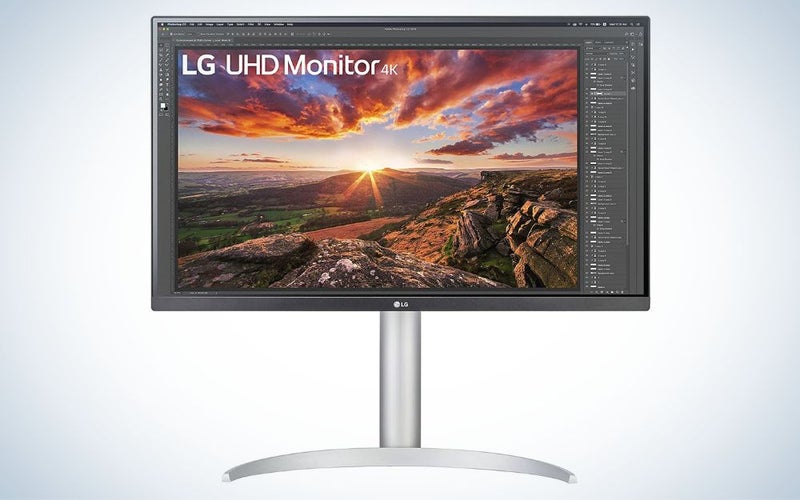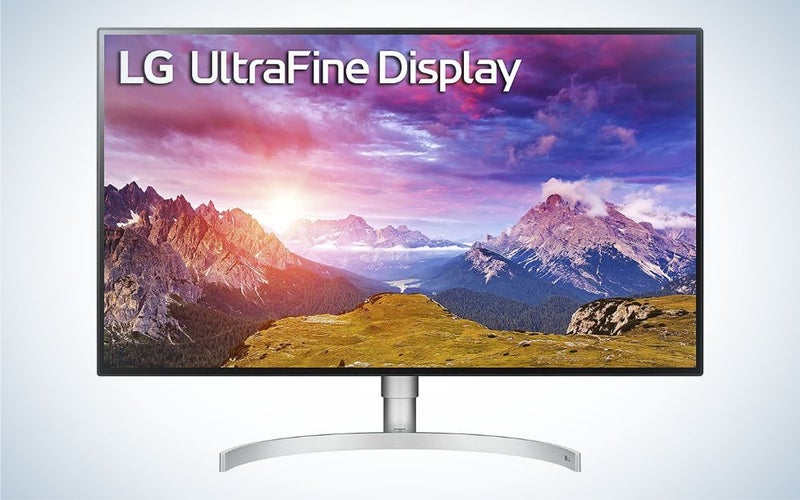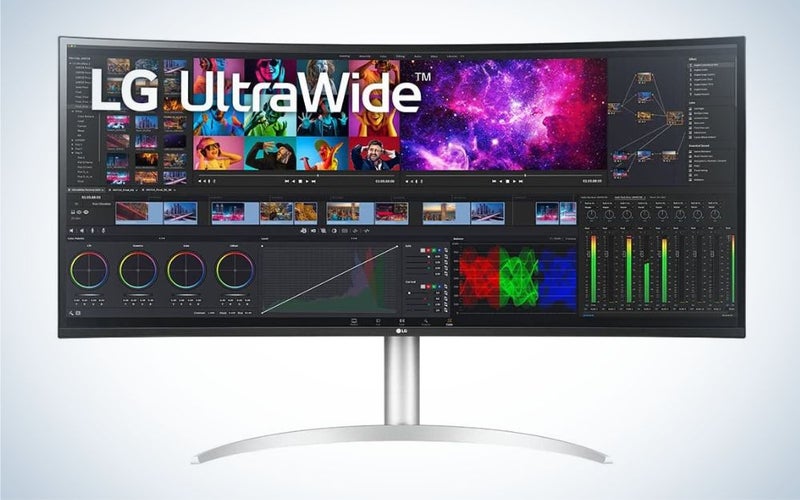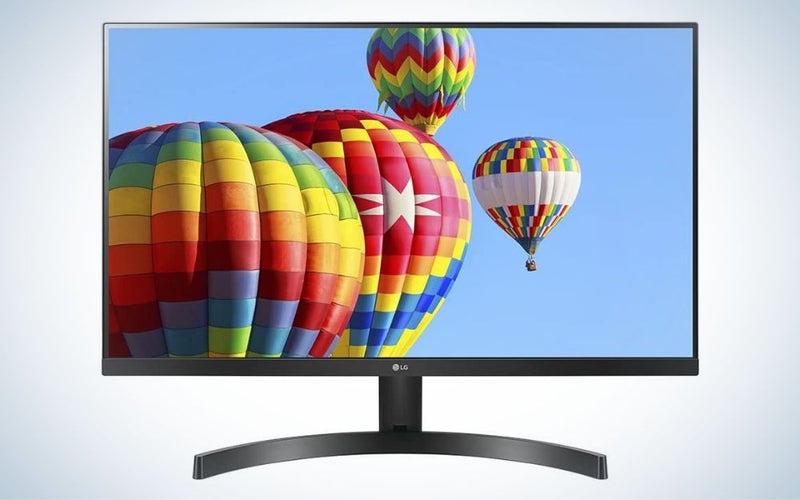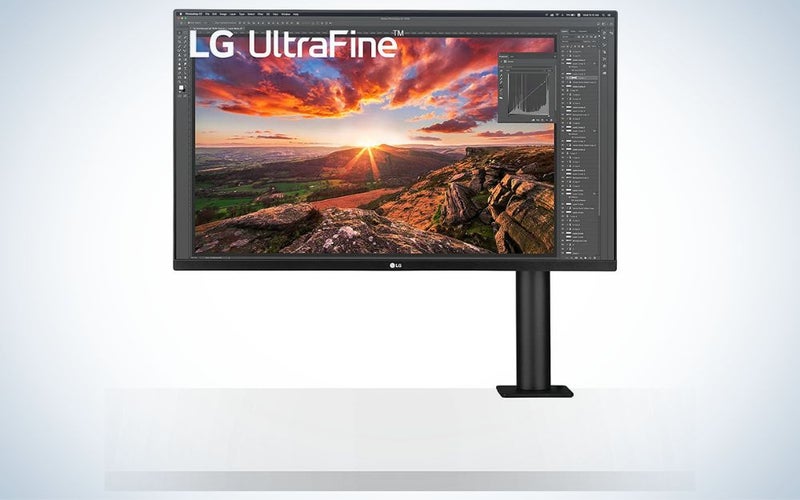We may earn revenue from the products available on this page and participate in affiliate programs. Learn more ›
If you haven’t considered LG monitors for your editing setup, you’re missing out on several really excellent options. Buying a monitor is a big deal for photographers because they directly affect the way we see and edit our work. While LG doesn’t have quite as much credibility in the creative community as some other brands, the company offers some truly capable models that would be right at home in a pro setup. We have curated this list of the best LG monitors that can handle photo editing, video creating, content consumption, and just about anything else you could do with a computer.
- Best overall: LG 27UP850-W Monitor 27”
- Best for photo editing: LG 32UL950-W 32″ Class Ultrafine 4K
- Best ultrawide: LG 40WP95C-W 40” UltraWide
- Best budget: LG 27MK600M-B 27″ Full HD IPS Monitor
- Best 32-inch: LG 32UN880-B 32″ UltraFine
Things to consider while shopping for the best LG monitor
Before we get into our category picks, here are some terms and features you should know about before heading into the jargon-filled world of computer monitors.
Size
With 75-inch TVs dominating the market at the moment, it’s tempting to jump up to an enormous computer monitor. Bigger isn’t always better. You’re going to be sitting fairly close to a computer monitor, which means a giant screen will have you turning and tilting your head unnecessarily all day long. It can quickly turn into an ergonomics nightmare. 27 inches represents the current sweet spot when it comes to monitors, but larger 32-inch screens are gaining popularity. We recommend sticking with either of those for the moment.
Resolution
Like with size, you may not have to max out the resolution for your new display. Right now, 4K monitors are gaining ground, offering 3,840 x 2,160, which is plenty of room for an on-screen image with an editing program’s tools and palettes spread out around it. Some users still prefer 1440p monitors because they’re cheaper and they don’t require as much computing firepower out of your machine to push all those pixels. Dropping down to 1080p resolution will likely feel disappointing at this point, so we recommend against going that low unless you have a solid reason.
Aspect ratio
Most typical monitors offer a familiar 16:9 aspect ratio, but that’s not always the case anymore. Ultra-wide monitors have been picking up momentum in recent years because they can replace several smaller monitors all on their own. If you’re going to go ultra-wide, make sure you have enough desk space to do so.
Mounting options
Many monitors embrace the VESA mounting system. You’ll typical see that term followed by a number, which indicates how many millimeters exist between the mounting screw holes. If you’re planning to mount your monitor to a monitor arm or other kind of stand, make sure it has the necessary mounting holes.
Panel type
You may see the term IPS applied to various monitors. That stands for in-plane switching and it’s a clever bit of technology that creatives typically want in their displays. Without digging too deeply into the complex tech, it allows typical LCD displays to achieve better, more consistent color accuracy as well as improved viewing angles. There are several new versions of IPS floating around, one of which is called nano IPS. You’ll find that in one of our picks.
Color gamut
Color is crucial for photographers and video shooters. You’ll often find that manufacturers indicate color gamut as part of their specs. Look for the percentage of the sRGB colorspace that the screen can produce. You want a display that can produce as much of that color space as possible. Some monitors go beyond sRGB into more complex gamuts. While extended color reproduction is nice for some creative professionals, you likely won’t need it for photography work.
The best LG monitors: Our picks and reviews
With most of the technical talk explained above, it’s time to dig into our specific picks. While we have broken down the choices by categories, everyone needs something slightly different in a monitor. We recommend checking out all the options we recommend before making a final decision.
Best overall: LG 27UP850-W Monitor 27”
LG
Why it made the cut: It’s not the fanciest model around, but this 27-inch screen strikes a perfect balance of price and performance to fit most people’s needs.
Specs:
- Size: 27 inches
- Resolution: 3,840 x 2,160
- Refresh rate: 60Hz
- Panel type: IPS
Pros:
- Very solid specs for the price
- IPS display
- 4K resolution
- Versatile stand
- HDR
- Covers more than 100 percent of sRGB
Cons:
- Includes some gaming features you may never use
Gigantic screens with lots of flashy specs tend to get most of the attention. This 27-inch screen, however, offers a nearly ideal mix of value and performance. It churns out a full 3,840 x 2,160 4K resolution, but only does it at 60p. That’s paltry for gaming, but plenty for editing photos.
It’s an IPS display and it comes calibrated from the factory so it provides solid color performance right out of the box. It comes with a very versatile stand that tilts, rotates, and moves up and down.
In addition to the screen, this model also offers a USB-C port with 96 watts of pass-through power, so you can plug it into your laptop without having to worry about an extra charger.
This is a very solid monitor that will allow you to do great work for years. Plus, it won’t cost more than your camera.
Best for photo editing: LG 32UL950-W 32″ Class Ultrafine 4K
LG
Why it made the cut: LG’s high-end monitor covers a huge color gamut with tons of pixels.
Specs:
- Size: 32 inches
- Resolution: 3,840 x 2,160
- Refresh rate: 60Hz
- Panel type: IPS
Pros:
- Covers 98 percent of the DCI-P3 color gamut
- Versatile stand
- Big, beautiful screen
- Daisy chaining 4K monitors via Thunderbolt ports
Cons:
- Expensive
For those who want to go big, this high-end monitor makes the most of its 32 inches of screen real estate. It offers a full 4K resolution, but once again keeps it at 60Hz, which is totally fine for photo editing.
The IPS display includes a dedicated hardware calibration mode meant for use with color management systems like those from X-Rite. It comes pre-calibrated from the factory, however, so it can produce accurate, vivid colors right out of the box.
While it’s solid for making photos and videos, it’s also fairly excellent for consuming content. It’s HDR compatible and offers ample brightness to make movies and TV shows look excellent.
It’s not a cheap piece of gear, but its specs, size, and overall performance justify the price.
Best ultrawide: LG 40WP95C-W 40” UltraWide
LG
Why it made the cut: This massive screen easily replaces two typical monitors.
Specs:
- Size: 40 inches
- Resolution: 5,120 x 2,160
- Refresh rate: 72Hz
- Panel type: IPS
Pros:
- Replaces a pair of monitors with ease
- Excellent color performance
- Sturdy, versatile stand
- Covers 98 percent of the DCI-P3 color space
- Daisy chain 5K monitors using the Thunderbolt port
Cons:
- Expensive
- Takes up a lot of desk space
Ultrawide monitors can replace a dual-monitor setup all on their own. This 40-inch display offers 5,120 pixels across and 2,160 pixels high. That’s essentially the equivalent of two 4K monitors next to each other.
This is a curved display, so you don’t have to worry about turning your head as much to see everything this large monitor shows at once. It’s an IPS display that supports 98 percent of the “DCI-P3 color space, so it’s plenty well-suited for creative work.
It offers full support for HDR10, which means it’s fantastic for watching streaming content from services that support it.
This isn’t a cheap display, but you have to think about it as if you’re buying two monitors at the same time. Even then it’s a bit pricy, but it’s flashy and functional enough to justify the cost.
Best budget: LG 27MK600M-B 27″ Full HD IPS Monitor
LG
Why it made the cut: It’s an IPS display that checks in under $200 retail
Specs:
- Size: 27 inches
- Resolution: 1,920 x 1,080
- Refresh rate: 60Hz
- Panel type: IPS
Pros:
- IPS panel for solid color
- Very affordable
- Sturdy stand
- Slim bezel
Cons:
- Only 1080p
- No additional ports
Choosing a budget monitor requires prioritizing the features you really want. This IPS display offers solid color performance and brightness, which is crucial for creative work. That’s a solid deal for under $200.
It has a thin bezel and an adjustable stand that makes it simple to work into your current setup. The 1080p maximum resolution won’t leave you a ton of room for your editing program, but this can be a great second monitor if you already have one.
VESA compatibility allows it to easily mount to the wall and it offers a dedicated reader mode, which tones down the blue light output in an effort to lessen eye fatigue.
This monitor retails for around $200, but you can typically find it even cheaper than that if you look. This is a solid option at that price point.
Best 32-inch: LG 32UN880-B 32″ UltraFine
LG
Why it made the cut: You can get a high-res 32-inch monitor without spending more than $1,000. This model is proof.
Specs:
- Size: 32 inches
- Resolution: 3,840 x 2,160
- Refresh rate: 60Hz
- Panel type: IPS
Pros:
- Great detail and color
- Fantastic stand with tons of adjustability
- 4K resolution
- Advanced USB-C connectivity
Cons:
- Ergo stand looks a little odd
Big monitos like this one can pose a real problem when it comes to finding the necessary amount of desk space. This display eschews that issue with a clever monitor arm that actually mounts to the desk. It can then hold the panel in just about any position to offer maximum comfort.
The screen itself is an IPS display that comes factory calibrated for excellent color reproduction. It connects to a computer via HDMI or USB-C. Several USB-A ports allow it to connect to accessories like a mouse and keyboard to free up ports on the computer.
At 32 inches, this is about as big as we recommend going for a dedicated computer monitor unless you really crave something bigger. We particularly like this one because of its flexible mounting options. So, if the screen shows up and proves too big for comfort, you can adjust it into a more ergonomic arrangement.
FAQs
Q: How much do LG monitors cost?
The cheapest LG monitors retail for around $200, which is about as cheap as you could expect for a decent screen. If you want to go up to the top end, you’ll find models that approach $2,000. There are lots of good options in between.
Q: Does LG make good computer monitors?
Absolutely. LG is one of the best TV makers on the market and its monitors provide solid performance for a fair price. There are some manufacturers out there like BenQ and Viewsonic who make more advanced monitors specifically for creatives, but LG has some options that will do the job nicely.
Q: How do I know if my monitor is dying?
It’s a sad thing to watch a screen degrade. The first thing you may notice in your dying screen is that the brightness isn’t what it once was. Displays rely on backlights which can degrade over time and lose their brightness. You may start noticing dead or hot pixels, which can show up as bright, single-color pixels that stand out from what should be on the screen. Older monitors also sometimes suffer from burn-in. This involves on-screen objects leaving ghostly images of themselves after staying on the screen for too long. The TVs at your local gym likely have this from the tickers that run across the bottom of the TV news channels.
Methodology: How we picked the best LG monitors
I have been evaluating monitors as a PopPhoto editor for years. I have tried models from every major manufacturer and sometimes rely on a suite of X-Rite color measurement tools for my evaluations. This list is the result of research based on my personal experience, editorial reviews, user feedback, and spec comparisons.
In order to choose the best LG monitors, I emphasized models that offer solid performance for their price tag. That’s why the best overall isn’t the most expensive model. I also wanted to ensure that every model offered an IPS panel for solid color reproduction.
Final thoughts on the best LG monitor
You don’t need to spend more than $1,000 to get a solid monitor. Our best overall pick checks in around half that price and offers solid color performance, excellent detail, and a robust suite of extra features to make it stand out from the rest. You can upgrade, of course, but you shouldn’t feel bad about going with a mid-level monitor that does everything you need it to.
